Kale is a nutrient-dense superfood that’s not only common in home gardens but also restaurants. The vegetable is packed with magnesium, vitamin A, vitamin C, vitamin K, and fiber. It’s also a rich source of antioxidant polyphenols that protect against oxidative stress and aging.

Its taste and versatility make this vegetable an excellent addition to stews, soups, salads, pesto, smoothies, and more.
Kale is a hardy vegetable that can grow anywhere. There are different types and varieties of kale, including both hybrid and heirloom types. Our detailed guide covers some of the common types of kale varieties and their differentiating characteristics.
Table of Contents
10 Types of Kale
Some of the common kale varieties include the following.
1. Premier Kale
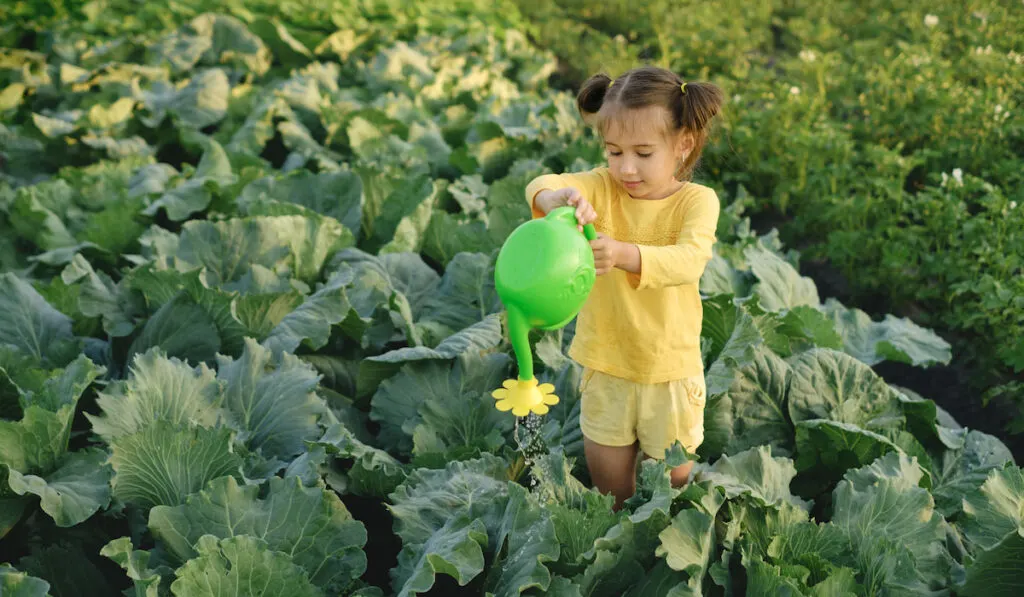
Premier kale is famous for its ability to thrive in any climate. You can plant this variety in both hot and cold climates. It has a leaf length of 15 inches and a mild flavor.
This kale variety can mature in 60 days and is an excellent choice for container gardening.
It has a medium-green color with very large and smooth leaves.
Premier kale is rich in vitamin A and other nutrients. It’s also simple to prepare, and you can add it to stews. Its fresh, rich taste makes it ideal for fresh salads and cold sandwiches.
2. Curly Kale
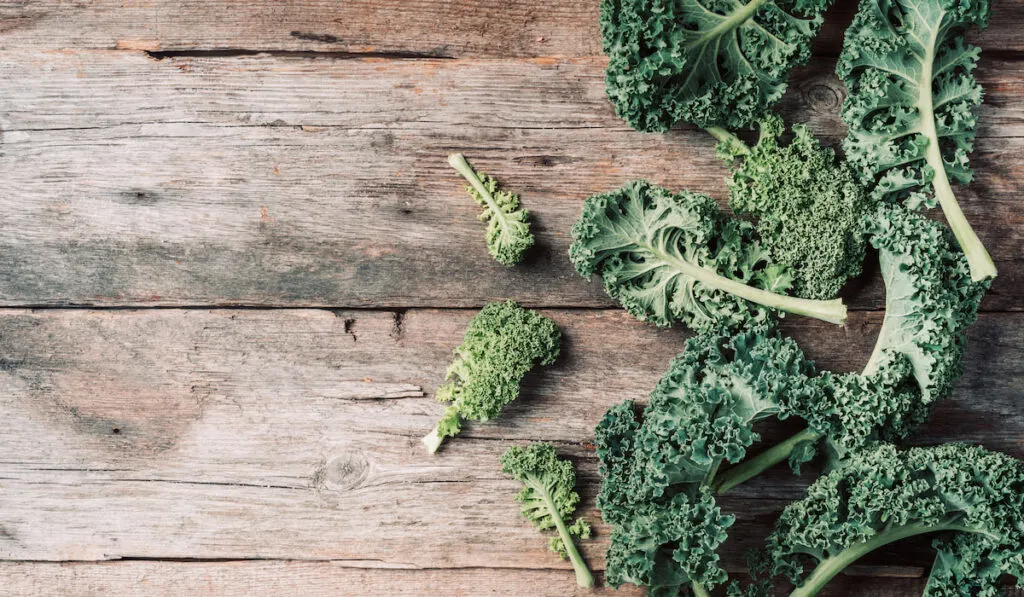
Curly kale is a popular kale variety found in most grocery stores. It comes in various shades of green and has rippled leaves. This kale can survive in cold and hot climates.
Curly kale has a slightly bitter taste that disappears when cooked. It can be served in salads or steamed and added to soups.
3. Lacinato
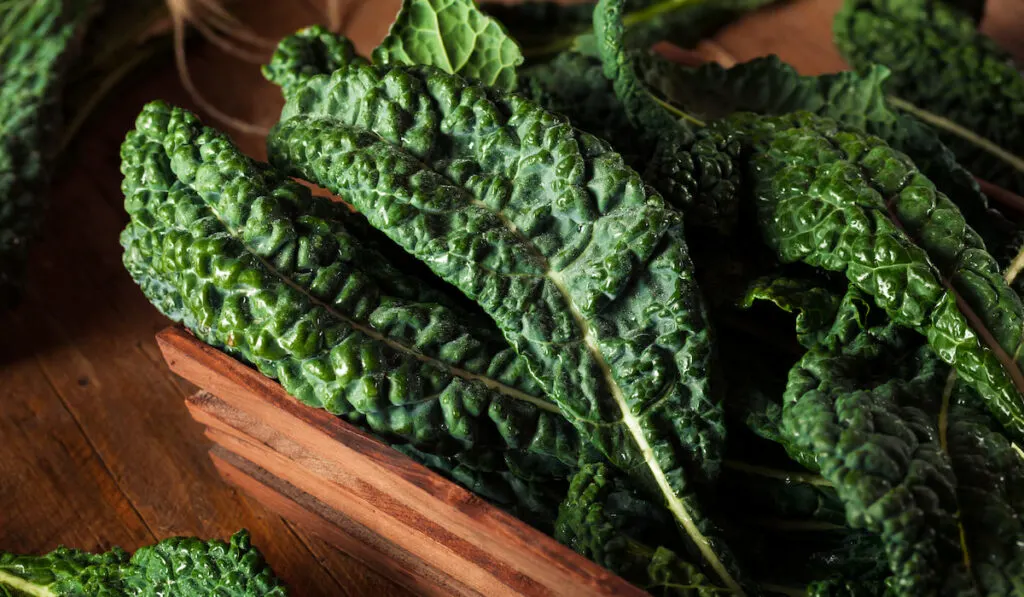
Lacinato or Tuscan kale has uncurled green leaves that resemble a dinosaur’s skin. The leaves have a thick stalk.
Unlike some kale varieties, Lacinato is an excellent variety to plant as it’s simple to grow and can thrive in both hot and cold climates.
Originally from Tuscany, Italy, this type of kale is best for braising and boiling. You can add it to soups and stews to add flavor. Alternatively, you can eat it raw, thanks to its mild and nutty flavor.
4. Redbor Kale
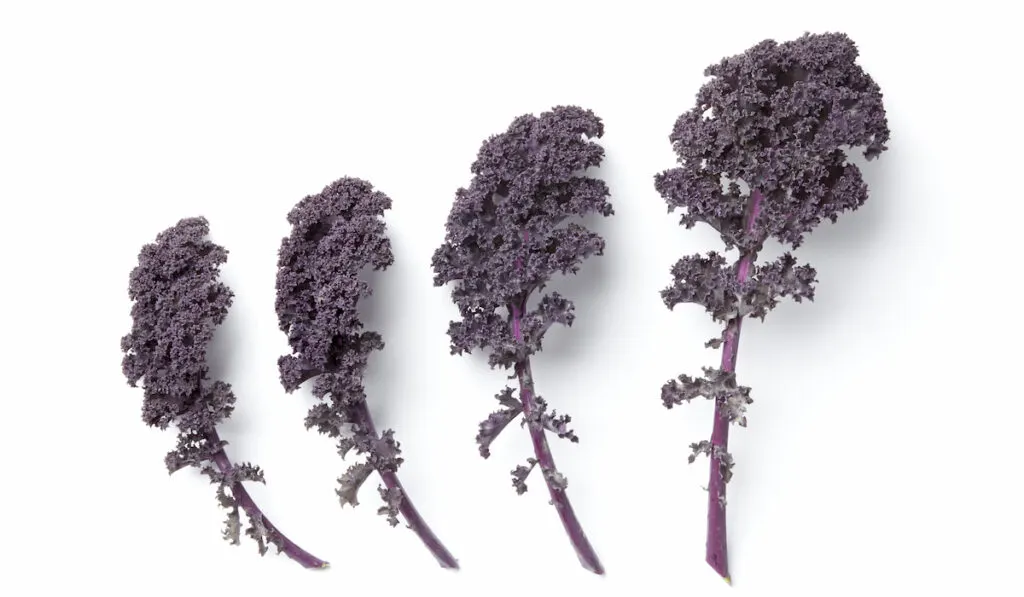
Redbor kale has ruffled purple leaves with shades of green, varying to a deep red-purple color.
Although the redbor kale has flat leaves, they tend to curl up and change their color during the cold season.
This kale variety can be cooked and used for garnishes as it has a mild taste. The kale retains the purple color even when cooked and makes a perfect addition to salads.
Some people also plant it for its ornamental qualities.
5. Red Russian
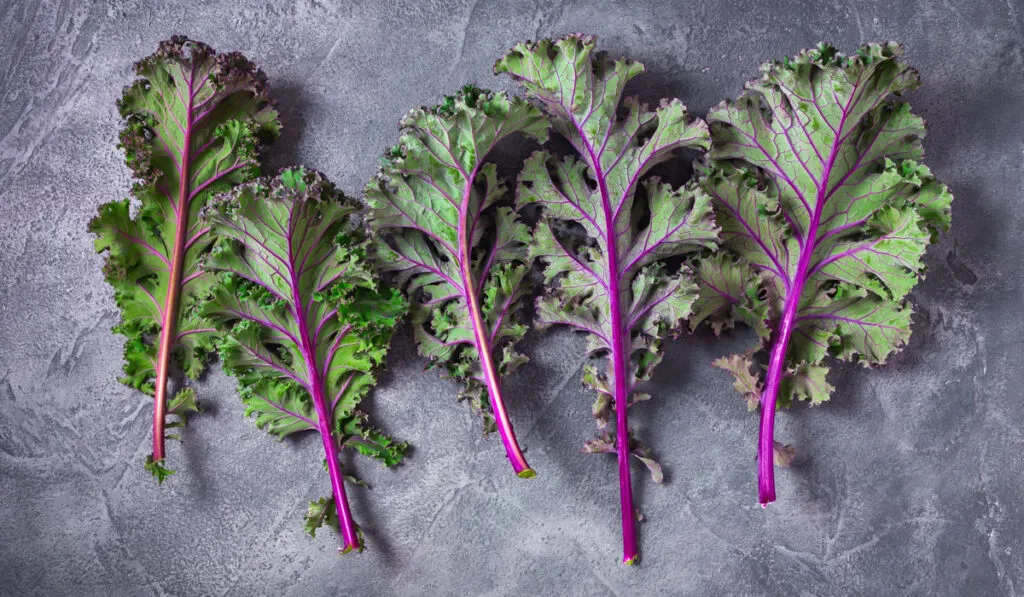
Red Russian kale is rich in nutrients and vitamins. It has a higher content of nutrients compared to other kale varieties.
One distinct feature of this variety is the light green, soft, thin leaves with red stems. Its wide-toothed leaves also darken when cooked.
While you can eat the young leaves in salads, mature leaves are best cooked and added to stews.
Unlike other kale varieties, the Red Russian kale is hardy and resistant to pests and diseases.
6. Siberian Kale
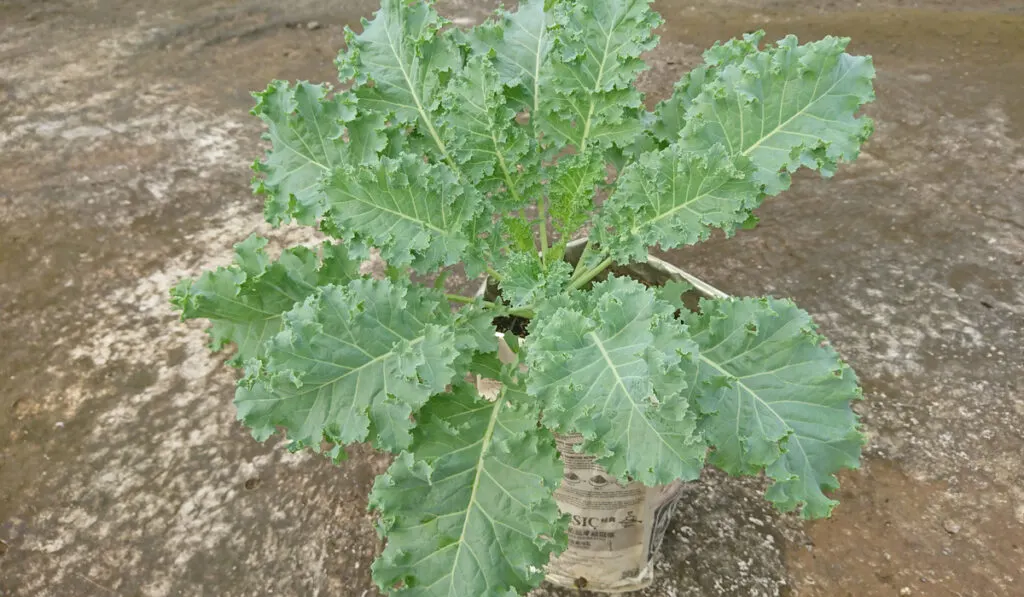
Siberian kale has green leaves with a tint of blue and white stems. There’s also a variety that has purple or red shades. The leaves are ruffled but flat in the middle around the central rib.
Siberian kale is one of the tender kale varieties that taste like cabbage when cooked.
Siberian kale, also known as rape kale, has seeds that produce oil. The rapeseed oil is rich in omega 3 and 6 fatty acids. Rapeseed oil is commonly known as canola oil.
7. Chidori Red Kale
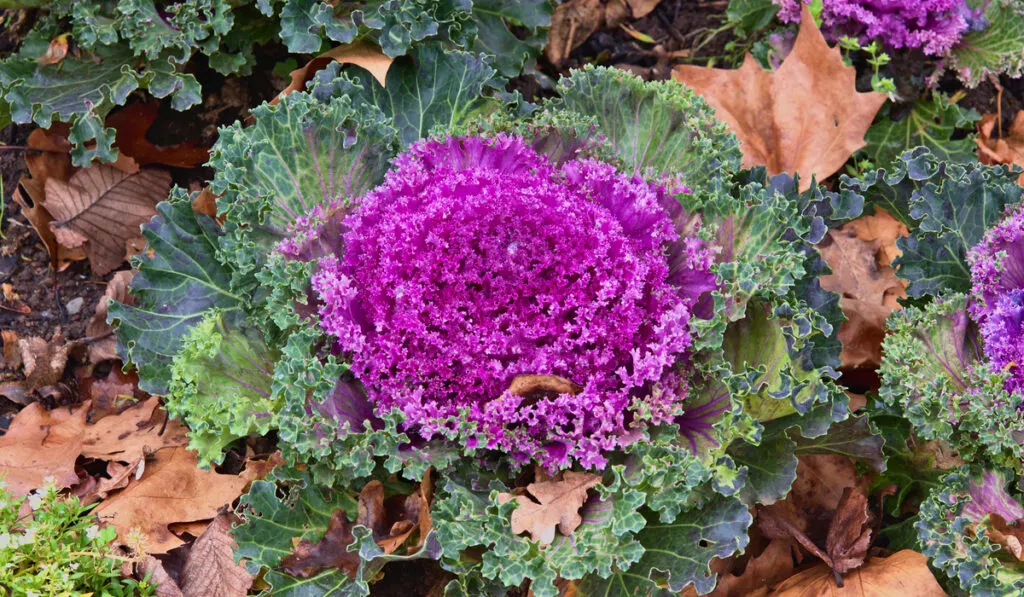
Chidori kale is grown as a decorative plant but can also be consumed. It has red, ruffled leaves that come from anthocyanin pigments.
Although edible, Chidori kale has a slightly bitter taste and tends to lose its color when cooked.
This kale variety contains vitamins A and C, magnesium, calcium, and dietary fiber.
Apart from using it as a raw garnish, you can also braise, stew, steam, and fry the Chidori kale.
8. Vates Dwarf Blue Scotch Curled Kale
The blue Scotch curled kale has tight green-blue leaves compared to curly leaf kale. This variety was developed in a Virginian agricultural facility, where it got the name Vates.
Blue Scotch curled kale can mature in 65 days and grows up to 16 inches tall.
Blue Scotch curled kale does well in cold and hot climates.
You can use this kale variety for your stews or pop some leaves in your salads.
9. Scotch Kale
Scotch kale has curly blue leaves. It’s a short type of kale that grows up to two feet tall.
The best part about Scotch kale is that it produces early and can be planted twice in a season.
The kale variety works best in both salads and stir-fries due to its sweet flavor.
10. Baby Kale
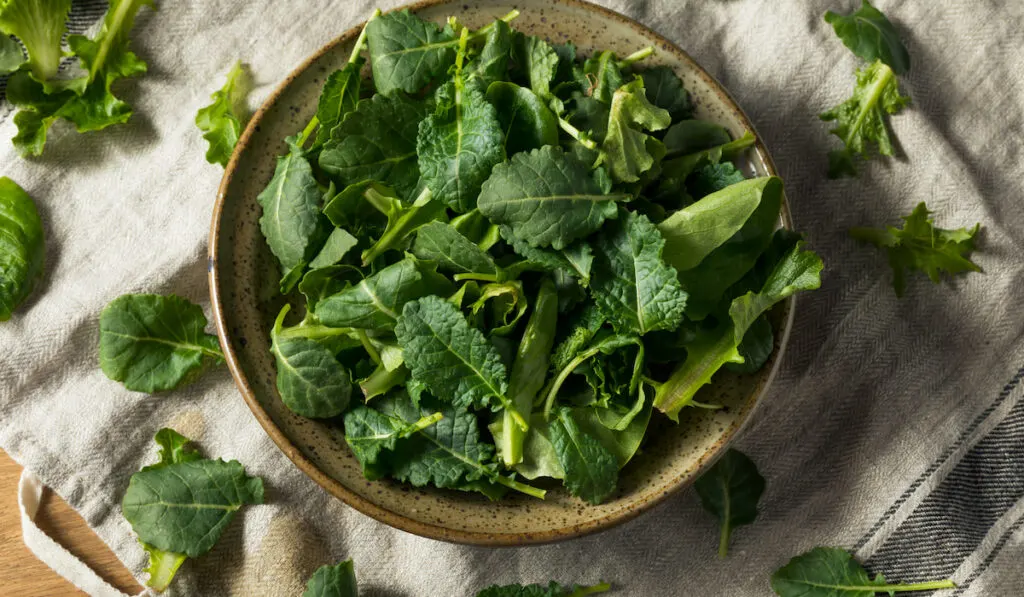
Baby kale has small and thin leaves with a taste similar to the regular curly-leaf kale. Its young leaves give it a milder flavor, which makes it a perfect addition to salads and other foods.
Don’t let its small size fool you, as baby kale is rich in iron, calcium, and vitamins.
The variety needs plenty of shade to grow as it’s not as hardy as other kale varieties. It thrives well in a place that’s not too hot or cold.
11. Ornamental Kale

Ornamental kale comes in different shades of white, pink, or purple with a flower-like center. This variety can survive in hardy areas.
Although it’s mainly used in decorations, ornamental kale can also be consumed. However, it’s tough and less tasty compared to other kale varieties. You’ll have to cook it for an extended period to soften the leaves and add them to soups or stews.
Some people use this type of kale as a garnish when serving other dishes.
12. Winter Red Kale
Winter red kale is a rare variety that thrives well in cold conditions. However, with sun exposure, the plant can mature in two months.
It has a bright red stem and green leaves.
13. Scarlett Kale
Scarlett kale has dark purple leaves that are curly. While the texture can be rough when eaten raw, this quickly changes once cooked.
Scarlett kale is one of the kale varieties that can thrive in any zone with enough water.
The kale takes up to 60 days to mature, and the longer it’s left to grow, the sweeter it becomes.
Most people prefer to eat scarlet kale in salads due to its firm and crunchy texture.
14. Walking Stick Kale
The walking stick kale features very large stems that grow up to six feet tall. It has large leaves and thick stems.
Unlike most kale varieties that can survive in any climate, the walking stick kale can only thrive in hot areas.
This variety has a sweet flavor and makes a great addition to salads and stews.
15. Chinese Kale

Chinese kale also referred to as Chinese broccoli, belongs to the Alboglabra group. It has wrinkled leaves, a short stature, and a thick stalk like broccoli.
This kale variety can grow all year round and is heat tolerant.
You can use the younger leaves and flowering stalks in your stir-fries or steam them like the regular leafy green kale.
16. Tronchuda Kale
Tronchuda kale is a Portuguese kale variety with unique bluish-green circular leaves. It resembles collard greens due to its light green or white stems.
The kale has a sweet taste and tender leaves. Tronchunda kale can survive in hot climates like wild cabbage.
Final Thoughts
Kale has different varieties that vary in terms of color, texture, and flavor. Whether you’re looking to grow your kale in the garden or get some to add to your stews and salads, there’s a wide variety to choose from.
Hopefully, you now know what to look for when shopping for a particular kale variety.
Resources
- https://www.onlyfoods.net/types-of-kale.html
- https://happybodyformula.com/actually-need-know-kale/
- https://www.bhg.com/gardening/plant-dictionary/vegetable/kale/
- https://ourstoneyacres.com/3-types-of-kale-grow-backyard-garden
- https://happydiyhome.com/types-of-kale/
- https://gardenversus.com/different-types-of-kale/
- https://yardsurfer.com/kale-types/
- https://www.justagric.com/best-kale-varieties-to-grow
- https://gardenerspath.com/plants/vegetables/best-kale-varieties/
